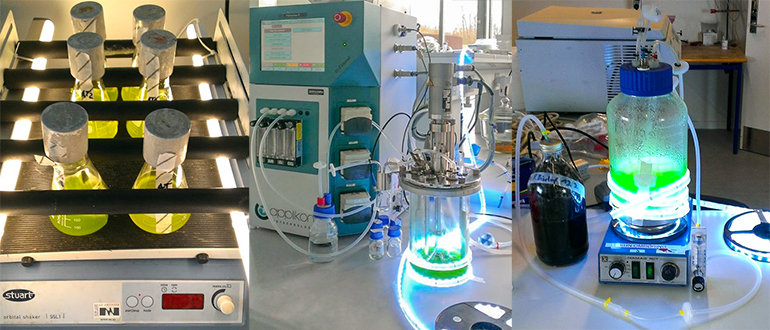Ron Bischof
Master Thesis – Energy Technology - 2017
The composition of raw biogas interdicts a direct injection into the methane gas grid as it would decrease the energy value and damage the grid system and gas engines. A common method of separating the other components (especially carbon dioxide) from the methane is washing them out with water in a scrubbing tower. The packed water is then recovered and the gas mix is released into the environment, thus contributing to greenhouse effect. The experiments conducted for this project reveal the possibility of growing microalgae (here Chlorella vulgaris) by using an artificial biogas mix (CH4 and CO2) and real raw biogas. An industrial study showed that high efficiencies of the same level as the common water scrubber are possible by using a packed-bed washing tower and increasing the algae suspension’s pH while applying a gas to liquid ratio of <1. The CO2 was bound into algae biomass, but more CO2 fumigated into the environment due to the used open pond photobioreactor concept while it was observed that up to 4% atmospheric oxygen was deposited into the cleaned biogas. The open pond is also not operable in regions with freezing temperatures and less sun hours. Furthermore, a continuous input of fertiliser is required in order to enable a stable algae growth. However, liquid effluent of the biogas production process (biogas slurry) can very well replace the mineral fertiliser as nutrient source. A potential concept could be to combine the washing tower with algae cultivation occurring in a closed photobioreactor and using biogas slurry as nutrient source. The overall concept would demand further research.
Collaboration Partners
SDU Chemical Engineering
Dominika Alexa Teigiserova
